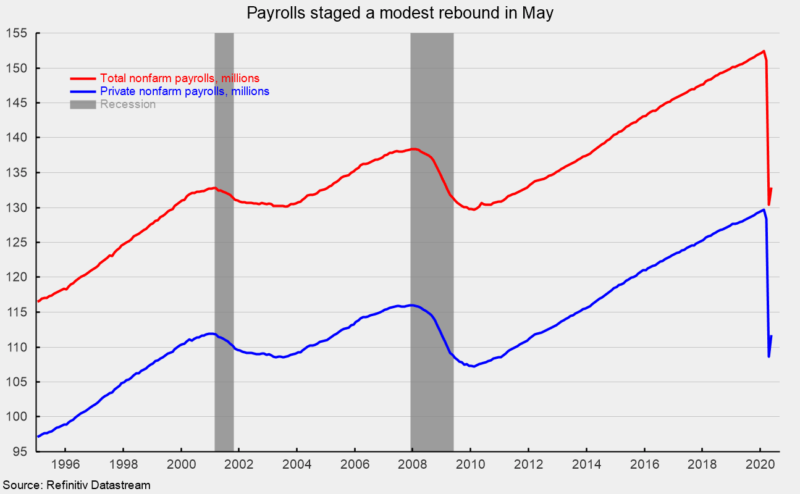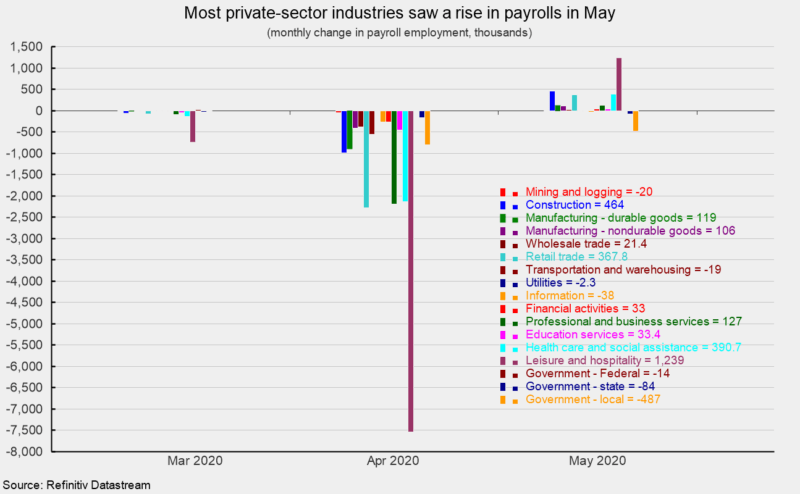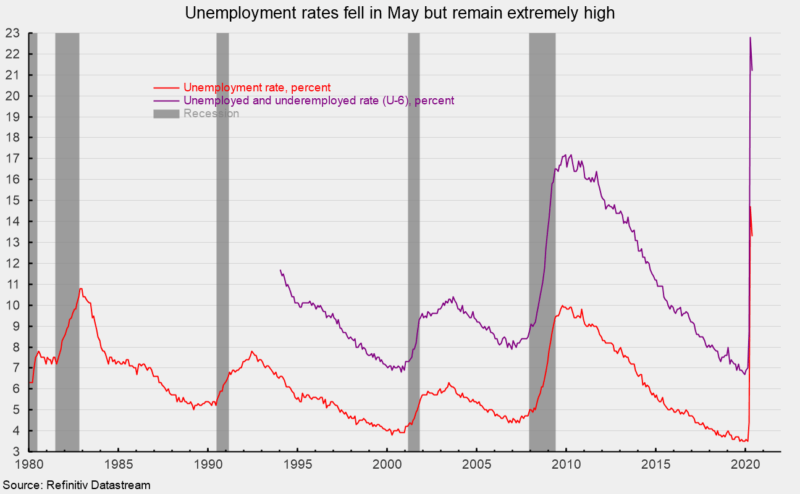Labor Market Rebounds as Private Payrolls Jump by 3 Million, Unemployment Rate Drops
U.S. nonfarm payrolls staged a modest rebound in May, adding 2.5 million jobs (see first chart), with gains spread across most private-sector industries. Like the April report, there were a number of technical issues with the May report including an unusually low response rate from the household survey portion and improper coding of some classifications. Nevertheless, the report suggests that the economy may be bottoming, setting the stage for recovery as restrictive government policies are lifted.
Overall, private payrolls added 3.1 million jobs in May (see first chart) with private services adding 2.4 million and goods-producing industries rising by 669,000. For private service-producing industries, the gains were led by a 1.2 million increase in leisure and hospitality followed by health care and social-assistance industries with a 391,000 increase and retail which added 368,000. Within the 669,000 gain in good-producing industries, construction added 464,000 jobs, durable-goods manufacturing increased by 119,000, and nondurable-goods manufacturing rose by 106,000. Mining and logging industries lost 20,000 jobs (see second chart).
The unemployment rate eased down to 13.3 percent while the participation rate ticked up to 60.8 percent. Despite the improvement, the 13.3 percent rate is still higher than the two next highest cycle peaks, the 10.7 percent peak in November 1982 and the 10.0 percent peak in 2009 (see third chart). Though data collection was much less reliable, the unemployment rate following the Great Depression was estimated to have peaked at about 25 percent in 1933. The Bureau of Labor Statistics also noted that the technical issues with this report likely underestimated the unemployment rate by about 3 percentage points in May, meaning the actual rate was closer to 16 percent versus about 20 percent in April (if adjustments were made). The officially reported underemployed and unemployed rate, referred to as the U-6 rate, fell from 22.8 percent in April to 21.2 in May (see third chart).
Average hourly earnings partially reversed last month’s surge, falling 1.0 percent for the month. The 12-month gain is 6.7 percent, however these numbers are distorted due to the skewing of job losses towards lower paid workers. Combining payrolls with hourly earnings and hours worked, the index of aggregate weekly payrolls rose 3.3 percent in May following an 11.1 percent decline in April. The index is down 6.0 percent from a year ago.
The upside surprise in the May jobs report is further evidence that the economy is already showing signs of bottoming. Those early signs are supported and encouraged by the easing of restrictions placed on people and businesses around the country.
While significant damage has been done to many industries, there are also reasons to believe some parts of the economy may rebound relatively quickly as restrictions are lifted. The focus going forward will be to monitor progress on recovery, identifying areas that can and do rebound versus those that may be burdened with longer-lasting damage or facing new or accelerating pressures for structural change.








